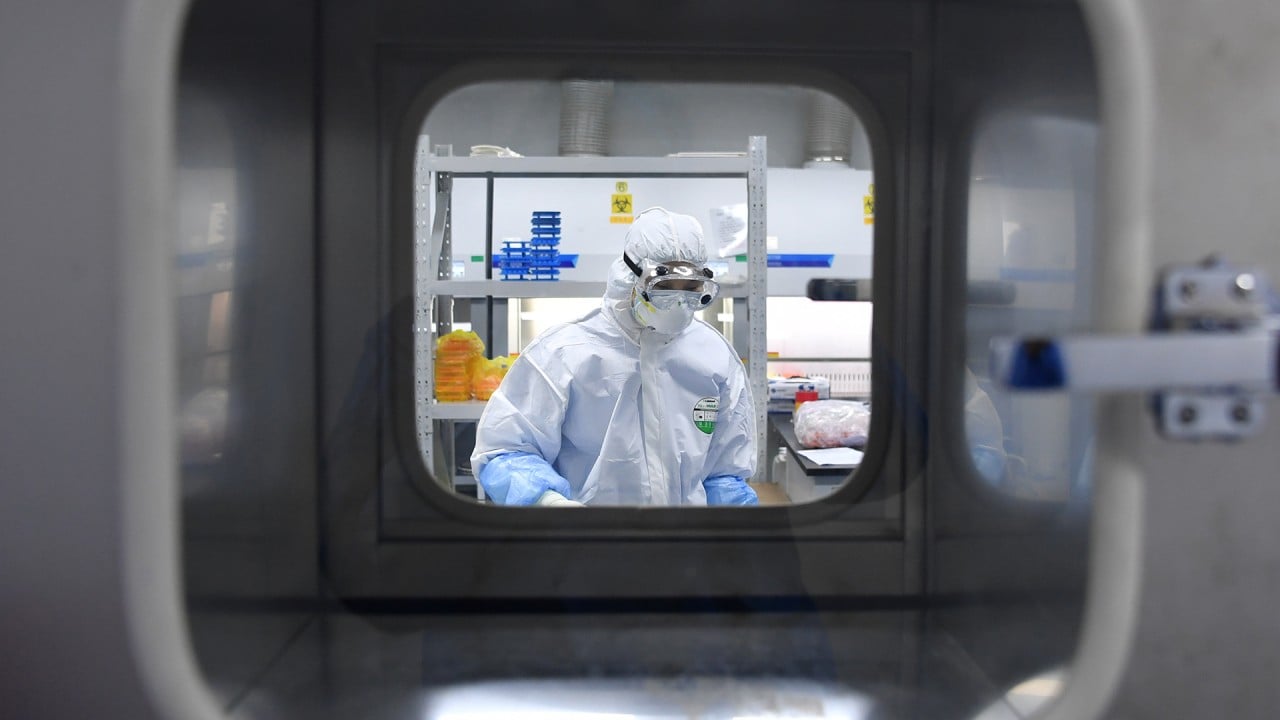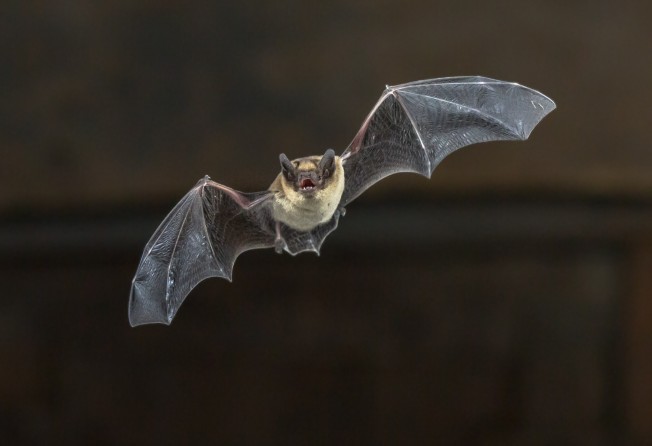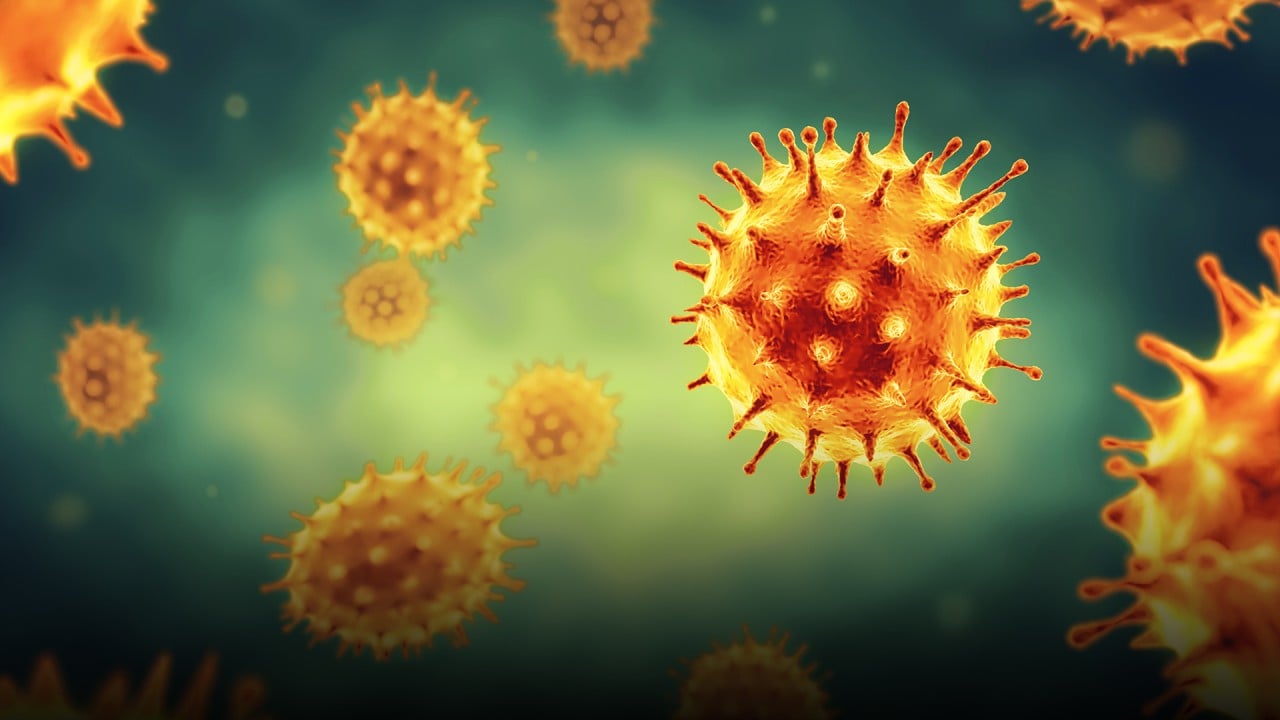
02:08
China says no evidence to suggest coronavirus virus came from Wuhan’s lab

A gene that helps the spread of the coronavirus in humans appears to reduce the infectivity of a similar bat virus, according to a new US government study that may cast doubt on a theory that the virus originated in a Chinese laboratory.
The virus raTG13, found in the dung of horseshoe bats in a cave in southwest China, was the closest known cousin to the novel coronavirus, with over 96 per cent similarity in genes. The biggest difference between them was the spikes, or proteins that bind the virus to a host cell.
At the US Food and Drug Administration’s (FDA’s) vector-borne viral diseases laboratory in Maryland, Dr Tony Wang and colleagues conducted an experiment to see what would happen to raTG13 if it were given a spike similar to that of Sars-CoV-2, the coronavirus that causes the disease Covid-19.
US government officials including President Donald Trump and Secretary of State Mike Pompeo have promoted a theory that the Covid-19 outbreak may have started at a laboratory in Wuhan where scientists studied the raTG13 bat virus.

02:08
China says no evidence to suggest coronavirus virus came from Wuhan’s lab
Dr Wang declined to comment on that theory, but said his work was intended to investigate something that could only have happened in a laboratory.
“In nature, there is no evidence that there is such a bat virus that carries the PRRA insert,” he said in a response to the South China Morning Post’s emailed queries on Wednesday.
PRRA is a four-amino-acid insert in the coronavirus’ genome that could cause a small but important change of structure in the spike protein. With the new structure, the spike can split apart more easily, and this may allow the viral envelope to fuse with human cell membrane more efficiently.
Scientists had found similar structures in other highly contagious pathogens such as human immunodeficiency virus (HIV), but not in the coronavirus.

01:55
Chinese foreign ministry spokesman claims US army brought coronavirus to Wuhan
Wang and colleagues created an HIV-based pseudovirus that carried the bat coronavirus’ spike protein with the PRRA insert. A pseudovirus is a modified virus that can infect cells, but safer to handle than a real virus because it replicates only once.
The new spike protein split more easily, as expected, the FDA scientists observed, but there was a negative impact on the pseudovirus’ ability to enter a host cell. The researchers tested it on cells from different potential hosts, including bat and pangolin, and the results were the same.
In human lung cells, for instance, the infectivity dropped by hundreds of times compared with those carrying natural bat virus spikes, according to their non-peer-reviewed paper posted on biorxiv.org on Tuesday. These results were “surprising”, they said.
The origin of Sars-CoV-2 is still a mystery. Although studies by scientists from around the world have produced plenty of evidence against the conspiracy theory that the strain was man-made, the intermediate host of the virus remains an open question.

03:10
Coronavirus: Decoding Covid-19
A wide genetic gap suggested the coronavirus may have separated from its bat relatives, including raTG13, years or even decades ago, but what happened between then and the current global pandemic has been a missing link.
The FDA study found a clue that could help bring the answer a step closer. Of the animals it was tested on, the PRRA insert could boost the bat virus’ ability to infect cells only in mice. This raised a possibility that mice could have been an intermediate host – but many studies, including this one by the FDA, have found that the human coronavirus, despite being able to infect many animals, could not infect mice.
The US government researchers had yet to find an explanation for those seemingly conflicting outcomes, but agreed with the consensus in the global research community that the virus could have existed long before it was detected in China in late December.
“Sars-CoV-2 may well have adapted in humans before the outbreak in Wuhan, China,” they said in the paper.